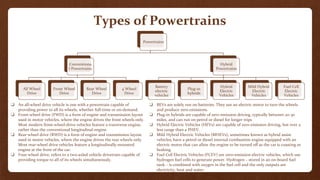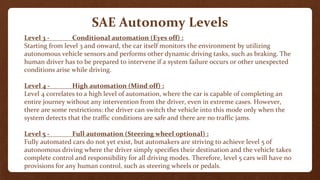The document discusses various topics related to automobiles including:
1. It describes the key components that make up a vehicle's powertrain including the engine, transmission, driveshaft, axles, and differential.
2. It discusses different types of engines like spark ignition petrol engines, compression ignition diesel engines, and their operating cycles.
3. It provides an overview of different automotive sensor technologies used for autonomous driving functions like cameras, radar, lidar, ultrasonic sensors, and others.
4. It outlines the SAE levels of vehicle automation from level 0 with no automation to level 5 with full automation and driverless capabilities.

















